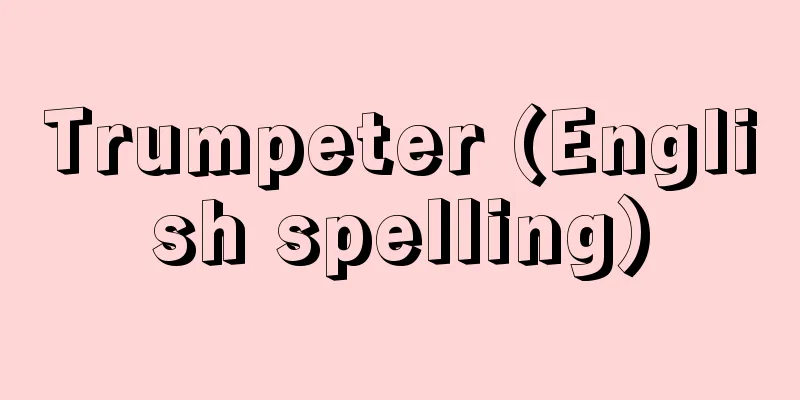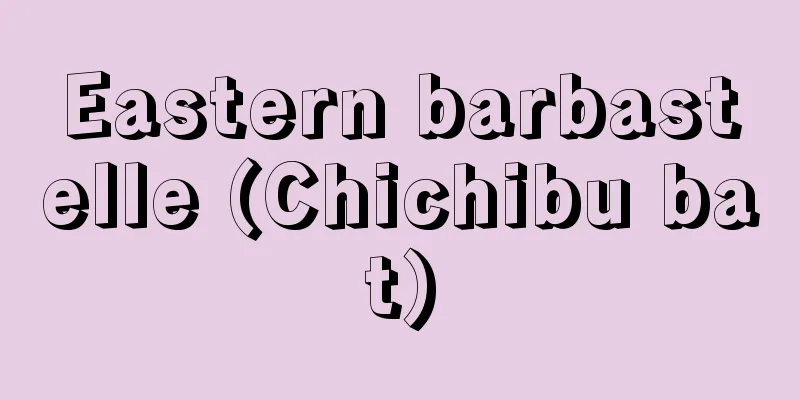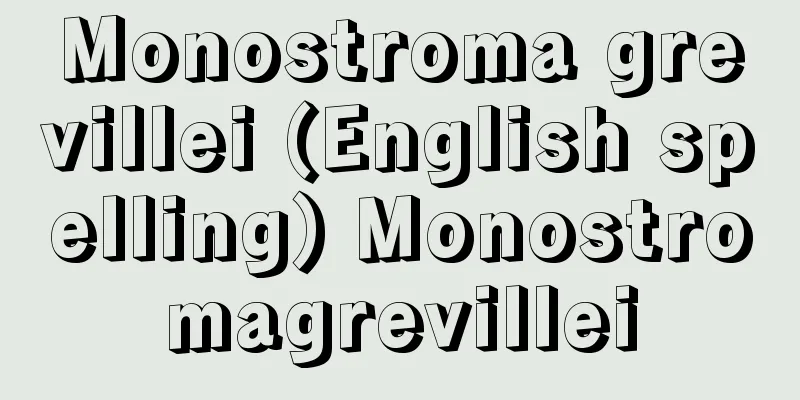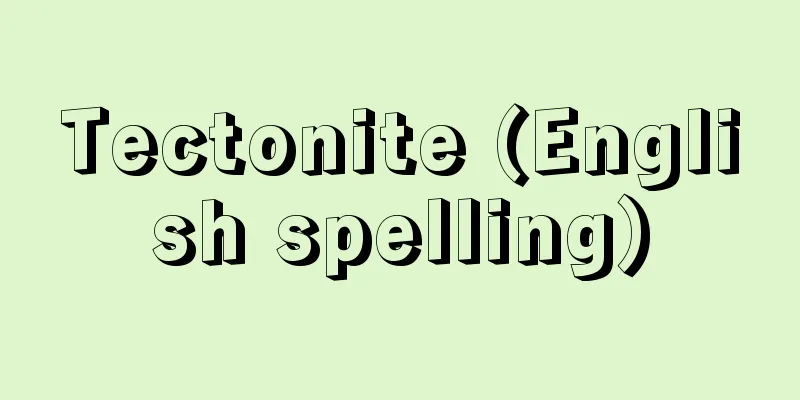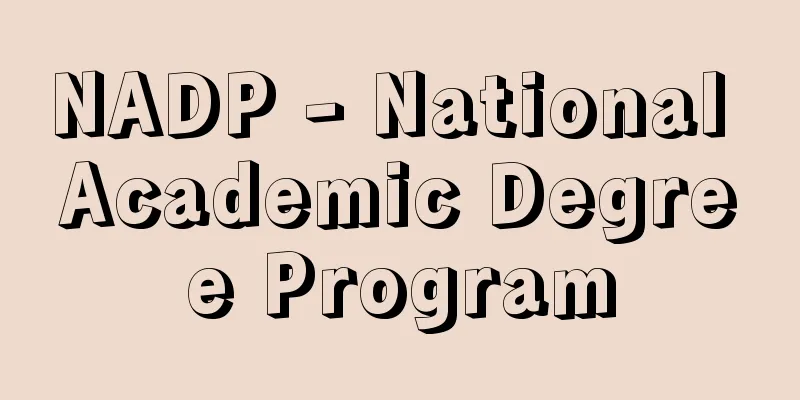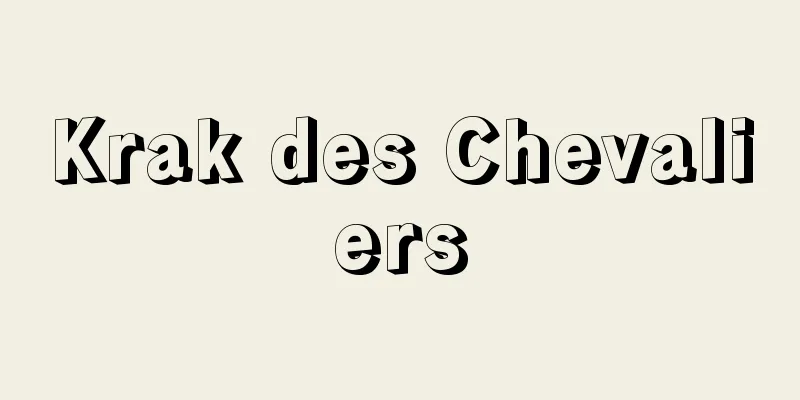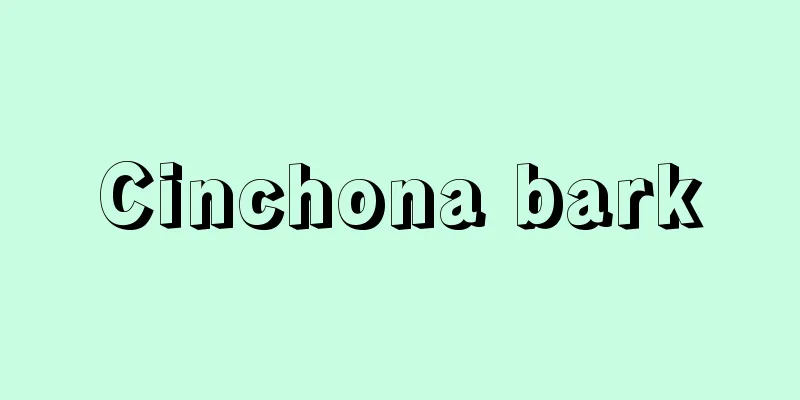Columbus - Christopher Columbus
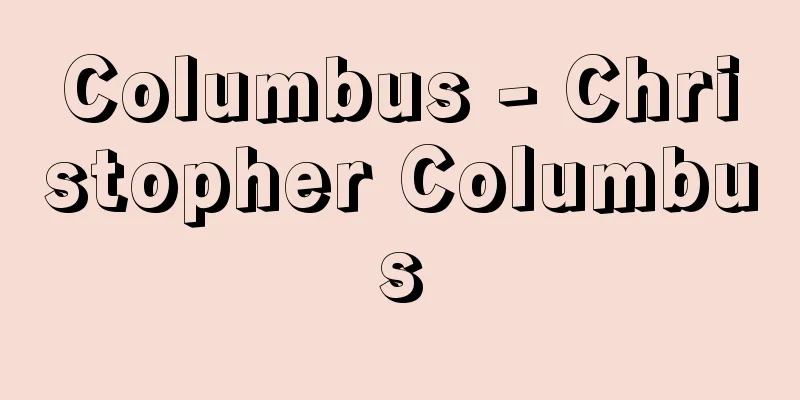
|
His Spanish name was Cristobal Colón, and his Italian name was Cristoforo Colombo. He was a navigator born in Genoa, Italy, and the "discoverer" of the New World. His date of birth is unclear, but he is believed to have been born between August 26 and the end of October in 1451. [Iizuka Ichiro] Until the "Plan" is realizedIn his late teens, he helped his father Domenico, a wool merchant, sail the Mediterranean Sea to buy and sell textiles and wine, and in his late twenties, he was asked to go to Madeira to buy sugar. In 1476, his ship was attacked by pirates and sunk off the coast of Cape S. Vincente, the southwestern tip of Portugal, and he is said to have swum ashore on a single plank, passed through Lagos, and went to Lisboa (Lisbon) relying on the Genoese merchants' settlement. Around this time, he read Marco Polo's Travels, Ptolemy's Cosmographia (Cosmology), Pierre d'Ailly's Imago Mundi (The World), and Toscanelli's letters, and is thought to have convinced him to sail west and reach the Orient (Cataïs, Zipangu). In 1479, he married a high-class girl named Felipe Perestrero, and the following year, their only child, Diego, was born. In 1483 or 1484, he petitioned King John II of Portugal for a plan to sail westward and reach the East, but the "Comité des Mathematici" (which deliberates on voyages of discovery) rejected the plan. He finally decided to petition the King of Spain, and in the summer of 1485, he arrived at the port of Palos in Spain with Diego. At that time, his wife Felipa was no longer alive. Through the arrangement of Father Marchena, abbot of the Monastery of Santa Maria de la Rabida in Palos, he had his first audience with Queen Isabel in January 1486, and petitioned for assistance in carrying out the plan. This was examined by a "special committee," but a decision was not easily reached. In the end, immediately after the fall of Granada, the plan was approved with the Queen's assistance (Concordat of Santa Fe, April 1492). [Iizuka Ichiro] First VoyageEarly in the morning of August 3, 1492, Columbus set sail from Palos with the Santa Maria, Niña, and Pinta, sailing west via the Canary Islands. After overcoming many difficulties, he discovered and landed on an island in the Bahamas, which he named San Salvador, at dawn on October 12. He then cruised around the surrounding islands, arriving at Cuba and Haiti (which he named Hispaniola), which he determined to be part of Asia, and set sail home after colonizing 39 or 43 people there (January 1493). He arrived in Lisboa (Lisbon) on March 13, 1493, and Palos on the 15th. In addition to the local rare products, his party included six or seven Indians. [Iizuka Ichiro] Second VoyageUpon hearing the report of the first voyage, King Isabella and her husband King Ferdinand immediately urged a second voyage. A fleet of 17 ships with about 1,500 people set sail from Cadiz on September 25, 1493, heading south from the Canary Islands, reaching an island in the Lesser Antilles, which they named Dominica, and in November, they reached Haiti. All the colonists they had left behind on the previous voyage were wiped out, but they later rebuilt a colony near Monte Cristi Bay and named it Isabela. They continued to explore in search of gold mines and a route to the Orient, but failed to make any notable discoveries, so they returned to the East in June 1494. When they returned to Isabela at the end of September, the colony was in a state of chaos and there was considerable animosity among the colonists. His younger brother Bartolomeo had come to Haiti from his home country, and Columbus left him there as lieutenant governor. In March 1496, he set off for home with 225 men and 30 Indians on two ships. [Iizuka Ichiro] Third VoyageAfter going through considerable difficulties, he left Sanlúcar with a fleet of six ships at the end of May 1498, and discovered the southernmost island of the Lesser Antilles at the end of July, naming it Trinidad. However, during his third voyage, due to jealousy and resentment against Columbus in his home country and the colonies, he was finally captured and imprisoned in Santo Domingo on the island of Hispaniola, and was sent home in October 1500. After arriving home, the suspicions against him by both kings were eventually cleared, but his status was not actually restored. [Iizuka Ichiro] Fourth VoyageHis final voyage was undertaken in despair, and he left Cadiz on May 9, 1502 with a fleet of four ships. However, until he returned to Sanlúcar on November 7, 1504, he faced a series of hardships, including frequent storms that damaged the ships, and he even had to ask for help from the Haitian Governor, Obando. In his later years, abandoned to glory, he lay ill in a sailors' quarters in Seville, without anyone to visit him. Queen Isabella died on November 26, 1504, and Columbus followed King Ferdinand to Valladolid, where he complained to the colonial authorities about their injustice and damages, but to no avail. He died in despair on May 20, 1506. [Iizuka Ichiro] "The Age of Discovery Series, Volume 1: Records of Voyages" (1965, Iwanami Shoten)" ▽ "The Voyages of Columbus 1492" by Robert Grün, translated by Onabe Teruhiko and Harada Setsuko (1971, Kodansha)" ▽ "Columbus," edited and translated by Aoki Yasuyuki (1978, Heibonsha)" ▽ "Columbus," by Karl Berlinden, translated by Konno Kazuo (Hakusuisha, Que sais-jes paperback)" ▽ "Columbus," by Masuda Yoshiro (Iwanami Shinsho)" ▽ "The Voyages of Columbus, by Bartolome de las Casas, translated by Hayashiya Eikichi (Iwanami Bunko)" ©Shogakukan "> Columbus's Route (1st to 4th voyages) Flagship of Columbus' expedition fleet © Hayao Nogami "> Santa Maria Source: Shogakukan Encyclopedia Nipponica About Encyclopedia Nipponica Information | Legend |
|
スペイン語名クリストバル・コロン、イタリア語名クリストフォロ・コロンボ。イタリアのジェノバ生まれといわれる航海者、新大陸の「発見」者。生年月日は明確ではないが、1451年の8月26日から10月末日までの間に生まれたと推定される。 [飯塚一郎] 「計画」の実現まで彼は、10代の終わりころには毛織物業者の父ドメニコの家業を手伝って織物やワインの売買で地中海を航海し、20代後半には頼まれてマデイラ島へ砂糖買付けのために出向いたこともあったらしい。1476年ポルトガル南西端サン・ビセンテ岬沖で、彼の船が海賊に襲われて沈没、板切れ一枚で陸に泳ぎ着き、ラゴスを経てジェノバ商人の居住区を頼ってリズボア(リスボン)へ行ったといわれる。彼はこの前後までの間に、マルコ・ポーロの『旅行記』、プトレマイオスの『コスモグラフィア』(宇宙誌)、ピエール・ダイイの『イマゴ・ムンディ』(世界の姿)、トスカネッリの手紙などを読み、西航して東洋(カタイ、ジパング)へ達することに確信を得たと考えられる。1479年フェリーパ・ペレストレロという上流階級の娘と結婚、翌年一子ディエゴが生まれた。1483年か84年に、彼は西航して東洋に達する「計画」をポルトガル王ジョアン2世に請願したようであるが、審議した「数学者委員会」(探検航海を審議する)はこれを否決。彼はついにスペイン国王に請願する決心をして、1485年夏ごろディエゴを連れスペインのパロス港へやってきた。このとき妻フェリーパはすでにこの世になかったようである。パロスのサンタ・マリア・デ・ラ・ラビーダ修道院長マルチェーナ神父の計らいで1486年1月イサベル女王に初めて謁見、「計画」遂行の援助を請願。これは「特別審査委員会」にかけられ審査されたが、容易に結論が出なかった。結局グラナダ陥落の直後、「計画」は女王の援助で許可されることになった(サンタ・フェの協約、1492年4月)。 [飯塚一郎] 第1回航海1492年8月3日早朝、コロンブス座乗のサンタ・マリア号のほか、ニーニャ号、ピンタ号の3隻でパロス港を出帆、カナリア諸島を経由して西航、多くの困難を克服して、10月12日未明、コロンブスがサン・サルバドル島と命名したバハマ諸島の一島を発見、上陸した。さらに付近の島々を巡航し、キューバ島、ハイチ島(イスパニョーラ島と命名)に至り、これをアジアの一部と判断し、ここに39人(ないし43人)を植民させて帰航の途についた(1493年1月)。彼は1493年3月13日リスボア(リスボン)、15日パロスへ帰港。彼の一行のなかに現地の珍奇な物産に加え、6人(あるいは7人)のインディオがいた。 [飯塚一郎] 第2回航海第1回航海の報告を聞いたイサベル、夫のフェルナンド両王はただちに第2回航海を促し、17隻の船団に約1500人が加わり、1493年9月25日カディスを出帆、カナリア諸島から前回より南に進路をとり、小アンティル諸島中の一島に到達、ドミニカ島と命名、11月にはハイチ島に至った。前回残してきた植民者は全滅したが、その後モンテ・クリスティ湾の近くに植民地を再建し、イサベラと命名した。さらに金鉱と東洋への道を求めて探検したが、めぼしい発見ができず、1494年6月東方へ引き返し、9月末イサベラに帰着してみると、植民地は乱脈を極め、植民者相互の不和反目が著しかった。本国から弟バルトロメオがハイチにきており、コロンブスは彼を副総督として同島に残し、1496年3月2隻の船に225人とインディオ30人を乗せて帰国の途についた。 [飯塚一郎] 第3回航海かなりの困難を経て、1498年5月末、6隻の船団でサンルーカルを出港、7月末日、小アンティル最南端の島を発見、トリニダー(トリニダード)Trinidadと命名した。しかし第3回航海では、本国および植民地でのコロンブスに対する嫉妬(しっと)反感、悪宣伝のため、ついにはイスパニョーラ島のサント・ドミンゴで捕らえられて監禁され、1500年10月本国へ送還された。本国につくと、やがて両王の彼に対する嫌疑は晴れたが、実際には彼の地位は回復されなかった。 [飯塚一郎] 第4回航海最後の航海は失意のうちに企てられ、1502年5月9日4隻の船隊でカディスを出港したが、1504年11月7日サンルーカルに帰着するまでたびたびの暴風雨で乗船が破損するなど苦難の連続であり、ハイチ総督オバンドに救助を求めたことさえあった。 彼の晩年は栄光から見放され、病躯(びょうく)をセビーリャの船員宿舎に横たえるが、訪れる人もなかった。イサベル女王は1504年11月26日この世を去り、コロンブスはフェルナンド国王を追ってバリャドリードまで行き、植民地当局の不正と損害賠償を訴えたが、無駄に終わった。彼は失意のうちに1506年5月20日この世を去った。 [飯塚一郎] 『『大航海時代叢書第一巻 航海の記録』(1965・岩波書店)』▽『ローベルト・グリューン著、尾鍋輝彦・原田節子訳『コロンブス航海記1492年』(1971・講談社)』▽『青木康征編・訳『コロンブス』(1978・平凡社)』▽『カール・ベルリンデン著、今野一雄訳『コロンブス』(白水社・文庫クセジュ)』▽『増田義郎著『コロンブス』(岩波新書)』▽『バルトロメー・デ・ラス・カサス著、林屋永吉訳『コロンブス航海誌』(岩波文庫)』 ©Shogakukan"> コロンブスの航路(第1回~第4回航海) コロンブスの探検船団の旗艦©野上隼夫"> サンタ・マリア号 出典 小学館 日本大百科全書(ニッポニカ)日本大百科全書(ニッポニカ)について 情報 | 凡例 |
<<: Colombo (English spelling)
Recommend
Fundamental human rights
These are rights that every human being has. They...
Matsuda [town] - Matsuda
A town in Ashigarakami County in western Kanagawa ...
Boye, K.
… Proletarian literature is a defining feature of...
Frog-nosed bat - Frog-nosed bat
...The superfamily Rhinolophoidea includes the Ly...
Najd
A region in the center of Saudi Arabia. Approximat...
Origin of Species - Shunokigen
This is the major work on evolutionary theory by ...
Inheritance of acquired characteristics
…Because his eyesight had deteriorated from strai...
Eight heads - Yatsugashira
〘Noun〙① A cultivated variety of taro. Seven to nin...
Hartog, D.
…In 1605, Willem Jansz explored the island of New...
Mariveles
…On the eastern coast of the peninsula, there is ...
Synchronic state
〘noun〙 The aspect of language viewed from the pers...
Williams, Channing Moore
Year of death: 1910.12.2 (1910.12.2) Born: July 18...
Kyushu Nature Trail - Kyushu Nature Trail
…However, unlike national parks, nature trails ar...
Toneri - Toneri
In the latter half of the 6th century, kuni no mi...
Heinrich III der Erlauchte (English spelling) Heinrich III der Erlauchte
...The Wettin family first established a strong b...
